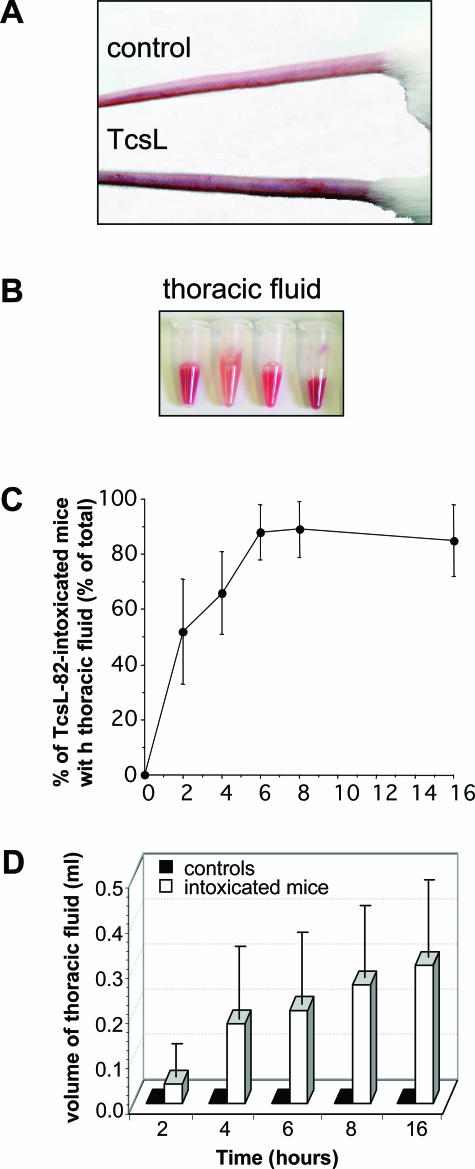Figure 1.
TcsL-82 induces anoxia in mice and fluid accumulation in the thoracic cavity. After intoxication for 6 hours with intraperitoneally injected TcsL-82 (15 ng/mouse), mice exhibit signs of anoxia such as darkened extremities (A) and various volumes of serohemorrhagic fluid were collected in the thoracic cage (B). In three different experiments, six to eight mice were sacrificed at various times after intraperitoneal injection of TcsL-82. For each experiment, the percentage of mice with fluid in the thoracic cage was calculated (C), and the volume of fluid present in the thoracic cage was measured (open bars) (D). Two control mice, injected with the diluent only, were euthanized at each time point. No fluid was collected from the thoracic cage of control mice (black squares). Results in C and D represent the mean ± SEM of the three different experiments.

